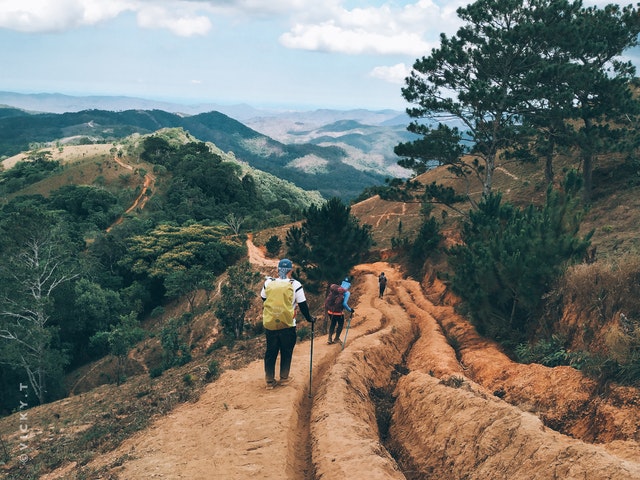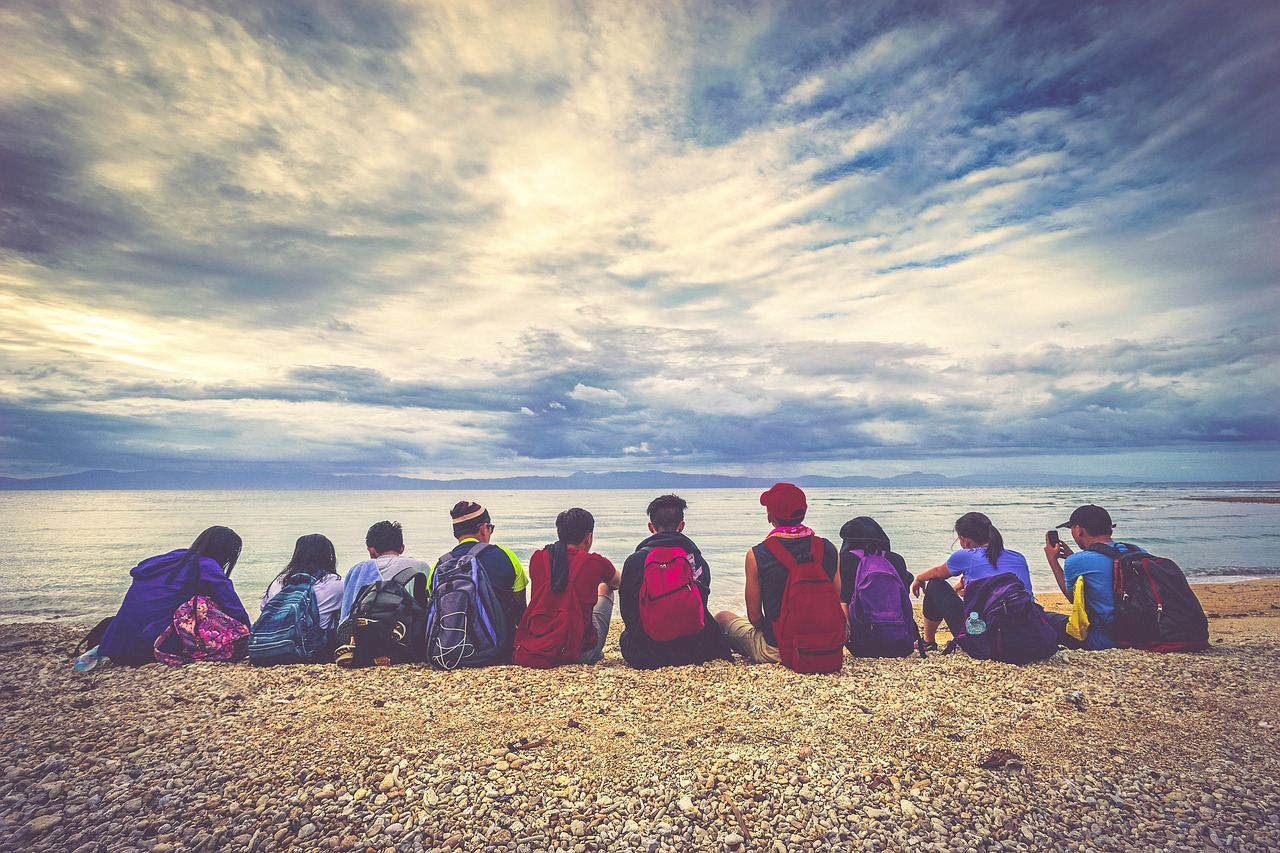
Whether you’re a seasoned hiker or just looking for an adventure, backpacking gear is crucial to your next getaway. Before heading out on the trail, read this handy guide and ensure you have everything you need.
A backpack
When you start shopping, you’ll first see many different types of backpacks. Some are big and bulky; some are small and sleek. Some have pockets and compartments; some have one or two. While all packs serve the same general purpose (carrying stuff), it’s essential to consider each type’s specific characteristics to select one that best suits your needs.
The first thing to look at when choosing a backpack is its fit: does it feel comfortable? Can I adjust it if my body changes size over time? Does it come with a waist strap to help distribute weight evenly across my shoulders? If not, do I have any way to add one myself? Once I’ve answered these questions, I can start considering other features like durability and waterproofing—but these things will only matter if they affect my comfort level on the trail!
A sleeping bag
Regarding sleeping bags, you’ll find that your choice is based mainly on personal preference. There are several factors to consider, including insulation type and warmth factor. The temperature rating of a sleeping bag can range anywhere from 15°F (-9°C) to 45°F (7°C), but keep in mind that this number gives you an idea of the lowest temperature rating at which you can expect to be comfortable using your bag.
When selecting a sleeping bag for backpacking or hiking, the most important aspect is finding one with an adequate temperature rating for where you’ll be traveling. For example, if you’re backpacking in Alaska during April or May, when temperatures average around 50 degrees Fahrenheit (10 degrees Celsius), choosing any bag with a lower limit below freezing would not be wise! However, if you’re headed out into Death Valley National Park at night when temperatures drop below freezing most nights, having a warmer-rated sleeping bag may make sense for comfort purposes alone even though it’s still technically outside its ideal range.”
A tent
A tent is a shelter that you sleep in. There are many different kinds of tents, but they all have one thing in common: they’re designed to keep you and your gear safe from the elements while you sleep or relax.
Tents come in two main types: freestanding and non-freestanding (also called “hangs”). Freestanding tents stand independently, usually with four poles holding up a fabric roof. Hanging tents don’t have bars; instead, they rely solely on guy lines (ropes) to support the walls and keep them taut against the wind. Both styles work well for backpacking and hiking because they can be packed down small enough to fit into most backpacks without taking up too much space or weighing too much for your chosen route.
A headlamp or flashlight
A headlamp is an excellent option because it frees up your hands and allows you to move freely. A flashlight can also be helpful, especially if you’re carrying a lot of gear or trying to read a map at night. You can use either one to light your tent so you can see where everything is inside before crawling in, which is very handy when visiting new places in the dark. One thing worth noting: some flashlights require batteries while others use rechargeable ones that need only be plugged into an outlet once they’ve been drained down below 50 percent capacity.
Food supplies
Remember, you’re going to be hiking for quite some time. You’ll want to ensure you have enough food to last the trip. It’s important that your pack is easy on your shoulders and doesn’t weigh too much, so make sure that the food you bring along is lightweight.
If you’re not a survivalist or preparing for an apocalypse (or if you are), chances are good that there will be stores en route where you can buy more supplies when necessary. However, bringing along some of your foodstuffs can also save money in case something goes wrong with the way or if it takes longer than expected for whatever reason—and it might even help create a fun bonding experience between members of your group!
A pocket knife
The best pocket knife for you will be one that can do everything from opening packages to cutting rope and twine. A locking blade is a good idea because it ensures that the knife won’t accidentally open while in your pocket or pack.
A folding knife will be more compact than a fixed blade, but both types work well for most tasks. A Swiss Army or Leatherman-style multi-tool might also be something to consider if you want an all-in-one solution for your hiking gear needs.
Clothing
Clothing should be breathable, lightweight, and durable. It is also essential that it is comfortable to hike in and appropriate for the weather. For example, cotton clothing will not work well when walking on a cold or rainy day because it holds moisture and does not dry quickly. You should have clothing that fits you well to move freely and protect yourself from sunburn or insect bites.
If planning on being out overnight or in harsh conditions, then bring appropriate gear (see below).
First-aid kit
A first-aid kit is one of the most important things on your hiking or backpacking adventures. It should contain all the essentials, like bandages, gauze, antibiotic ointment, and tweezers. And finally, it must be compact enough to fit in any nook and cranny of your backpack while leaving plenty of room for other items like food rations and clothes layers!
Maps and GPS device
Maps and GPS devices are tools to help you find your way around, but they’re not the same. A map is a topographic representation of an area that shows elevations and contours, along with natural features like rivers, lakes, mountains, and more. It can also show artificial structures like buildings and roads—or even other trails in the area you’re looking at.
A GPS device like a smartphone app or hand-held unit displays your location on a map (called “breadcrumb” breadcrumbs) and where you’ve previously gone while using it. While this feature is excellent for getting back to where you started if you get lost (which is something that rarely happens), what many hikers fail to realize is that these devices aren’t reliable when there’s no cell service available—meaning if something goes wrong during your hike or trip into nature, then there may not be anyone around who can tell them where their friends are located!
You will need a good amount of gear to go backpacking.
To go backpacking, you will need a good amount of gear. The best gear for backpacking is a tent, sleeping bag, pad, backpack, water filtration system (for filtering water from streams), cooking equipment (stove and pot), food supply, first aid kit, maps, and compass. You can get this kind of equipment in many places: REI (Recreational Equipment Incorporated) is an excellent place to start; they have everything you need if you’re beginning or want to upgrade your equipment. If you’re going hiking or backpacking with friends who already own all the necessary equipment, then all left is to plan where you want to go!
You may want to decide whether it’s worth renting or buying an RV before leaving home. Renting one can be expensive but owning one has its benefits too! Don’t forget about safety precautions either – always check local weather reports before setting off on an adventure like this one because rainstorms happen without warning sometimes, so make sure everyone knows what kind of clothes/gear they should bring along in case anything wrong happens during their trip away from civilization 🙂
Conclusion
There are a lot of things to think about when you go backpacking. You need durable and lightweight gear, so it doesn’t weigh you down when hiking. The best backpacking gear will also help keep you safe from the elements and comfortable during your journey. If you aren’t sure where to start, we recommend starting with a good backpack for carrying all your supplies in one place—they also come in many different sizes depending on how much stuff fits inside!
